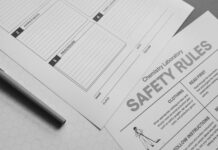
What is Risk Assessment in Safety?
What is Risk Assessment in Safety? : In today’s world, safety has become a paramount concern in both our personal lives and various industries. Whether you are at home, in the workplace, or involved in high-risk activities, the concept of safety is universal and non-negotiable. To ensure the safety of individuals and property, a fundamental process known as risk assessment plays a pivotal role. In this article, we will delve into the intricacies of risk assessment in safety, its significance, the process involved, and much more.
Introduction to Risk Assessment
Safety is a top priority for individuals and organizations alike. It involves safeguarding against potential harm, injuries, or loss. Risk assessment is a systematic and structured process that aims to identify, evaluate, and prioritize potential risks and hazards. The ultimate goal is to reduce or eliminate these risks to prevent accidents and promote overall safety.
The Importance of Safety
Safety is crucial because it protects human lives, property, and the environment. It is not merely a box to tick but a core aspect of responsible and ethical living. In the context of organizations, it fosters a healthy working environment, reduces the financial burden of accidents, and enhances a positive reputation.
What Is Risk Assessment?
Risk assessment is the methodical examination of activities, processes, and situations to recognize potential hazards and assess the associated risks. It involves a structured approach to identify dangers, analyze the probability and consequences, and take appropriate measures to control or minimize these risks.
Why Is Risk Assessment Important in Safety?
Risk assessment is indispensable because it allows for proactive safety management. It helps organizations and individuals to anticipate potential hazards and take preventive actions. By doing so, we can reduce the likelihood of accidents, injuries, and damage to property.
The Process of Risk Assessment
Risk assessment consists of several steps, which can be summarized as follows:
Identifying Hazards
The first step is to identify potential hazards in a given situation. Hazards can be physical, chemical, biological, ergonomic, or psychosocial. Identifying these hazards is a crucial initial step.
Assessing Risks
Once hazards are identified, the next step is to assess the risks associated with each hazard. This involves evaluating the likelihood of an incident occurring and the severity of its potential consequences.
Risk Mitigation Strategies
After assessing the risks, the focus shifts to developing strategies to mitigate or control these risks. This can involve implementing safety measures, providing training, or making changes to processes and equipment.
Benefits of Effective Risk Assessment
Effective risk assessment yields numerous benefits. It promotes safety, reduces accidents, and enhances overall efficiency. It also helps in resource allocation, decision-making, and compliance with safety regulations.
Industries That Require Risk Assessment
Several industries depend heavily on risk assessment for safety, including construction, healthcare, manufacturing, transportation, and nuclear energy. These sectors deal with various risks and hazards daily, making risk assessment a necessity.
Legal and Regulatory Aspects
Many countries have stringent legal requirements for conducting risk assessments, especially in high-risk industries. Compliance with these regulations is not just a legal obligation but also a moral responsibility.
Challenges in Risk Assessment
Risk assessment is not without its challenges. Factors like human error, changing circumstances, and the dynamic nature of risks can make it a complex process. Nevertheless, it remains essential for safety management.
Technology’s Role in Risk Assessment
Advancements in technology have transformed the way risk assessment is conducted. Tools like software applications and sensors have made the process more efficient and accurate, helping organizations mitigate risks effectively.
Conclusion: Prioritizing Safety Through Risk Assessment
In a world filled with uncertainties and potential risks, safety becomes an unwavering priority. Risk assessment is the bedrock on which safety is built, enabling us to identify, evaluate, and manage potential dangers effectively. By prioritizing safety through risk assessment, we can prevent accidents, protect lives and property, and ensure a secure and thriving future for all.
What is the Difference between EHS and HSE?
What are the Important Points of HSE?
Frequently Asked Questions (FAQs)
1. What are the key benefits of conducting risk assessments? Conducting risk assessments helps in identifying potential hazards, reducing accidents, and enhancing overall safety and efficiency. It also aids in resource allocation and decision-making.
2. Are there industries where risk assessment is particularly important? Yes, industries such as construction, healthcare, manufacturing, transportation, and nuclear energy rely heavily on risk assessments due to the inherent risks they face.
3. How does technology aid in the risk assessment process? Technology has significantly improved the efficiency and accuracy of risk assessment through tools like software applications and sensors.
4. What challenges can be encountered in the process of risk assessment? Risk assessment can be challenging due to factors such as human error, changing circumstances, and the dynamic nature of risks.
5. Why is compliance with legal and regulatory requirements for risk assessment important? Compliance with legal and regulatory requirements for risk assessment is essential not only for legal reasons but also to fulfill moral and ethical responsibilities towards safety.





















